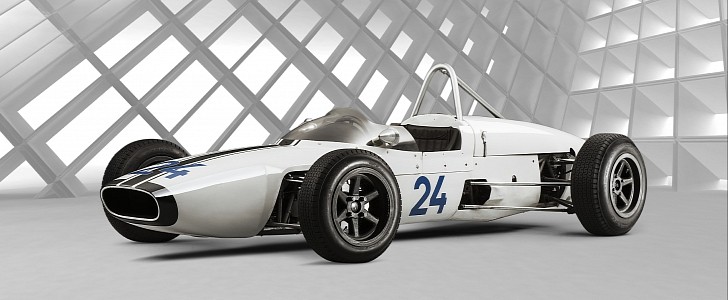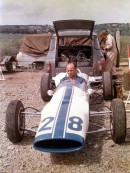Skoda is celebrating “120 years of Skoda Motorsport” by paying tribute to some of its most famous racing cars, which played an important part in the motorsport history, even if they are less known outside Europe, because of the political context. The Skoda F3 monoposto had a successful career until competition from the Western countries eventually took over the racing tracks, by the end of the 1960s.
The Skoda F3 monoposto was built in 1964, after the regulations for the traditional Formula 3 monoposto category had changed. The monoposto project received the S 992 designation, because of the technical similarities to the S 990, ready for series production at the time. The First S 992 single-seater had a tubular steel trellis frame and independent suspension. To improve its aerodynamic character, adjustable shock absorbers and coil springs were mounted on both axles, inside the body.
Initially, the 1-liter engine was able to deliver 72 Hp (53 kW) at 7,250 rpm, eventually being able to reach 66 kW (90 hp) at 8,000 rpm at the 1966 season, thanks to continuous upgrades and an increased compression. At first, Skoda F3 was able to reach a maximum speed of 188 kph (116.8 mph), and then got to 200 kph (124 mph) in the next 2 years.
The removable, sleek bodywork was initially made of aluminum, later replaced by fiberglass-reinforced plastic. The F3 monoposto’s drivetrain continued to be produced, as modified versions, until 2003, and was used for the last time in the first-generation Skoda Fabia.
A total of 3 single-seater competed in the Formula 3 1965 competition, with drivers Vaclav and Jaroslav Bobek, and Miroslav Fousek. Considering that at the time, there were no artificially-constructed circuits and the races were staged on challenging or improvised tracks, these drivers’ performance is even greater than we realize. However, just a few years later, not only would the competition become too serious, but the Formula 3 regulation changed again, in 1971, requiring 1.6-liter engines.
Although the Skoda F3 monoposto’s career was not too long, it marked another important phase in the company’s racing history. One of the 3 cars is now part of the Skoda Museum collection, another one belongs to the National Technical Museum in Prague, and the third one was converted into a 2-seater Spider Baghira, in the 70s.
Initially, the 1-liter engine was able to deliver 72 Hp (53 kW) at 7,250 rpm, eventually being able to reach 66 kW (90 hp) at 8,000 rpm at the 1966 season, thanks to continuous upgrades and an increased compression. At first, Skoda F3 was able to reach a maximum speed of 188 kph (116.8 mph), and then got to 200 kph (124 mph) in the next 2 years.
The removable, sleek bodywork was initially made of aluminum, later replaced by fiberglass-reinforced plastic. The F3 monoposto’s drivetrain continued to be produced, as modified versions, until 2003, and was used for the last time in the first-generation Skoda Fabia.
A total of 3 single-seater competed in the Formula 3 1965 competition, with drivers Vaclav and Jaroslav Bobek, and Miroslav Fousek. Considering that at the time, there were no artificially-constructed circuits and the races were staged on challenging or improvised tracks, these drivers’ performance is even greater than we realize. However, just a few years later, not only would the competition become too serious, but the Formula 3 regulation changed again, in 1971, requiring 1.6-liter engines.
Although the Skoda F3 monoposto’s career was not too long, it marked another important phase in the company’s racing history. One of the 3 cars is now part of the Skoda Museum collection, another one belongs to the National Technical Museum in Prague, and the third one was converted into a 2-seater Spider Baghira, in the 70s.












